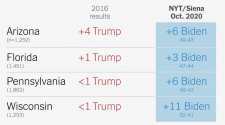A shortage of oral health care providers, particularly in rural areas, hinders dental care access for low-income residents across the state.
Carolina Public Press
The COVID-19 pandemic changed processes and protocols in the medical profession as exposure risk became a top priority for front-line health workers.
For oral health care providers, the once routine act of peering into mouths became a dangerous and possibly even deadly work hazard.
To avoid the risk, some dentists turned to teledentistry to connect with patients through video chat, coaching them to use their phones to photograph their mouths and offering consultations through screens.
The practice, born of necessity in the midst of a global health crisis, offered a path to help address a long-standing and widespread need in North Carolina’s health system: access to oral health care.
As of September 2019, an estimated 2.4 million North Carolinians struggled to get adequate dental care, according to the Health Resources & Services Administration of the U.S. Department of Health and Human Services.
Residents in 98 of the state’s 100 counties live in a region designated by the federal government as a Dental Health Professional Shortage Area, or HPSA.
“This has been a problem for years, and it continues to be a problem in our state,” said Dr. Darryl Smith, program coordinator for Friendly Dental Van, an organization that provides oral health care access to communities throughout North Carolina.
Too few providers
In the last 40 years, the number of practicing dentists in the state doubled, but the increase did not keep pace with the state’s population growth.
Although the number of practicing dentists rose from 2,207 providers in 1979 to 5,112 providers in 2017, the state’s dentist-per-population ratio lagged below the national average, according to data from the Sheps Center for Health Services Research at the University of North Carolina.
“North Carolina’s population is growing exponentially. It is one of the fastest growing states in the country, which makes it hard to keep up,” said Dr. Zachary Brian, program director of the N.C. Oral Health Collaborative.
In eight counties, the shortage affects patients of all income levels because there are not enough dental providers regardless of a patient’s ability to pay. Three counties in the state—Hyde, Tyrrell and Gates—have no actively practicing dentists, according to 2019 data from Sheps Health Workforce NC.
Increasing the number of dentists in the state, especially in nonmetropolitan areas, could help address the need, but training and retaining dentists remain complex challenges.
Recruiting and training North Carolina residents can improve the likelihood that they stay in state to practice.
On average, 90 percent of graduates from UNC Chapel Hill’s Adams School of Dentistry remain in North Carolina to practice, so an increased number of students will very likely translate to an increased number of dentists, according to data from the Sheps Center.
The total number of North Carolina dentists increased in the last decade, boosted in part by the 2011 opening of the state’s second dental school at East Carolina University, which focuses on serving rural and underserved populations.
Other providers, such as North Carolina’s more than 6,000 dental hygienists, could help address the critical need, but state regulations restrict who may perform some services without direct supervision by a dentist.
“We are not utilizing our workforce effectively,” Brian said. Relaxing the restrictions could allow for hygienists to travel to underserved populations to perform simple preventive and restorative procedures, he said.
A complex challenge
A shortage of providers is only one facet of the problem. “I think we do have a shortage, but it is much more nuanced and complicated than just that,” Brian said. Cost, geography and cultural misconceptions contribute to inequities in dental care throughout the state.
Cost is the leading barrier for access to dental care for adults nationally. Some areas, called population-based HPSAs, have enough providers for the population, but those without financial resources have difficulties accessing care. In 87 North Carolina counties, people are unable to access dental care because of income issues.
“You can live in an area with a dentist on every corner; that still does not mean you automatically have access to care,” Brian said.
The sliding-scale fee schedule at the state’s 42 federally qualified health centers, community organizations that provide care for underserved populations, allows some low-income populations to access dental services.
Low-income patients may qualify for Medicaid, which covers “medically necessary” dental care, but patients often have difficulty finding providers who accept Medicaid.
“There are already few Medicaid oral health providers across our state and our region, and even fewer are true Medicaid providers,” said Dr. Amanda Stroud, dental director for AppHealthCare, an accredited district health department for several counties in northwest North Carolina.
“Offices may be registered as Medicaid providers, but they might not be accepting new Medicaid patients, or they only provide it to a certain age or one day a month.”
Cost considerations factor into treatment decisions long before a person receives a dental bill. Hourly wage earners may be unable to take time off to visit a dentist, fearful of lost income or penalties for missing work, and some individuals lack access to the necessary transportation or child care to attend an appointment.
“I see people in their 40s who have never visited a dentist,” Stroud said. “They have been choosing between paying for groceries or their electric bill for the month instead of getting this cavity taken out.”
Beyond cost and access
Providing access to dental services is only part of the puzzle, said Smith, whose Friendly Dental Van regularly provides care for children across the state. Quality care depends on public understanding of the importance of oral health.
“There are a lot of adults that still are terrified of the dentist and don’t see the need for dental care unless pain is involved,” Smith said. “People believe preventive dentistry is unnecessary when that is far from the truth.”
Bringing dental care to schools is one way to improve understanding about the importance of oral health care, Smith said.
“Half the children we see, going up to middle school, it is the first dental visit of their life,” he said. “We work hard to create a relaxed and friendly atmosphere. The impression they get from us is so important to prevent them from growing up into dental-phobics.”
Stroud, the AppHealthCare dental director, first saw a dentist as a middle school student, and the experience encouraged her to provide that same service to others.
“Kids get eye exams at school. Kids get hearing exams at schools. They aren’t charged for those, so why can’t we bring in more dental to meet children where they are?” she said.
















